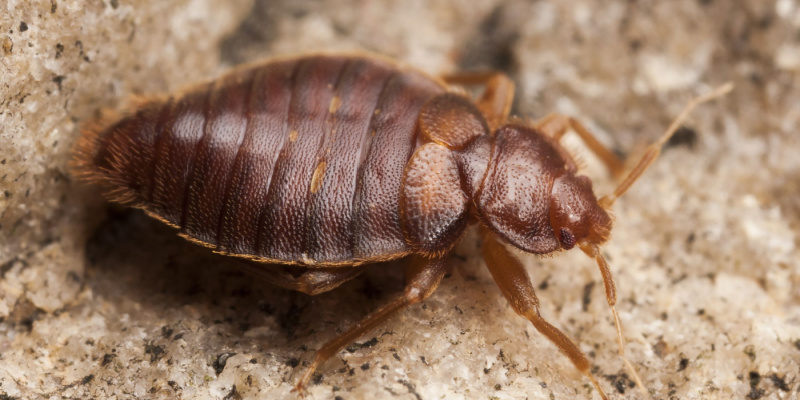Local Bed Bug Exterminator: DC Heat Treatment Services Available
Local Bed Bug Exterminator: DC Heat Treatment Services Available
Blog Article
Exploring the Science Behind Bed Pest Warmth Treatments as a Sustainable Pest Monitoring Technique
In the world of insect management, the mission for reliable and sustainable solutions stays a constant search. One such method that has gained grip recently is the use of heat therapies to battle bed insect infestations. By using the scientific research behind thermal death factors for these relentless bugs, warm therapies provide a promising choice to standard chemical-based techniques. The details of exactly how warm properly removes bed bugs and the wider implications for lasting bug management practices make this a subject worth exploring even more.
Bed Insect Warm Therapy Refine

Thermal Death Factor for Bed Insects
Exposing bed insects to elevated temperature levels beyond their thermal resistance range is vital for achieving reliable removal in warmth treatment procedures. The thermal death factor for bed pests refers to the temperature level at which these insects can not endure. Research shows that bed bugs start to die when exposed to temperature levels above 113 ° F(45 ° C) for a sustained duration. As the temperature boosts, so does the death rate of bed insects. At around 118 ° F(48 ° C ), bed pests begin to pass away rapidly, with a mortality price of nearly 99% within minutes of direct exposure. This shows the sensitivity of bed insects to high temperature levels and highlights the effectiveness of warmth treatments in getting rid of infestations. By getting to and keeping temperatures above the thermal fatality point for bed pests, pest administration specialists can guarantee thorough elimination of bed bug populaces, including hard-to-reach areas where chemical therapies may be less efficient. Recognizing the thermal death point for bed bugs is vital for applying successful warm therapy approaches and achieving sustainable insect administration results.
Benefits of Warm Treatments
Having actually established the important thermal death point for bed pests, it is vital to currently check out the substantial advantages that warm therapies provide in successfully eradicating these resistant pests. One of the main benefits is that heat can permeate deep right into cracks and holes where bed pests hide, making sure that even the most hard-to-reach areas are warmed to lethal temperatures.
In addition, warm therapies are environmentally friendly and non-toxic, making them a lasting pest monitoring strategy. Unlike chemical pesticides, heat treatments do not leave unsafe residues read this post here that can pose dangers to human health or the environment. This aspect is especially essential in sensitive environments such as hospitals, schools, and suburbs where chemical usage may not be preferable.
Furthermore, warmth therapies have a high success price in removing bed insect problems in a solitary therapy, minimizing the requirement for several sees and minimizing disturbance to occupants. This efficiency not just conserves time and cash but also supplies comfort to those managing bed pest issues.
Efficiency of Heat Treatment

Warmth treatments have the included benefit of killing bed pest eggs, which are often resistant to standard chemical treatments. On the whole, the efficiency of warmth treatments in removing bed insect problems makes them a reputable and sustainable insect monitoring technique.
Lasting Parasite Administration Perks
Executing lasting pest management methods uses long-term advantages for both the atmosphere and public health and wellness. By using methods such as warm treatments for bug control, we can decrease the reliance on harmful chemical pesticides that can have damaging results on ecosystems and human health and wellness - exterminator near me. Sustainable insect monitoring approaches aid in maintaining biodiversity by targeting details pests without harming non-target organisms, thereby keeping a well balanced ecological community
Furthermore, lasting bug administration practices add to the overall health and well-being of the general public. By decreasing direct exposure to harmful chemicals used in conventional pest control approaches, warm treatments provide a more secure alternative for parasite management in domestic, business, and public spaces. This decrease discover this in chemical usage additionally assists in stopping pesticide residues from infecting soil, air, and water, guarding environmental high quality.
Verdict
In conclusion, bed insect warmth treatments have been revealed to be a lasting and reliable pest administration technique. The thermal fatality factor for bed bugs makes them prone to warmth treatments, which have numerous benefits over conventional chemical therapies. The effectiveness of heat treatments in getting rid of bed pest problems while minimizing environmental effect highlights the capacity of this approach as a lasting remedy for pest control.
The bed bug heat treatment process includes increasing the temperature within plagued areas to a level that successfully gets rid of bed insects and their eggs. By getting to and preserving temperature levels over the thermal death point for bed insects, insect administration experts can guarantee extensive elimination of bed bug populations, including hard-to-reach locations where chemical therapies might be less efficient. One of the primary advantages is that warmth can pass through deep right into fractures and gaps where bed bugs conceal, making certain that also the most hard-to-reach areas are heated to lethal temperature levels. Unlike chemical therapies that may leave behind resistant populaces, warm treatments offer a non-toxic and eco pleasant option that can permeate deep into furnishings, wall surfaces, and other hard-to-reach locations where bed insects hide.
The thermal fatality factor for bed bugs makes them at risk to warmth treatments, which have numerous benefits over conventional chemical treatments.
Report this page